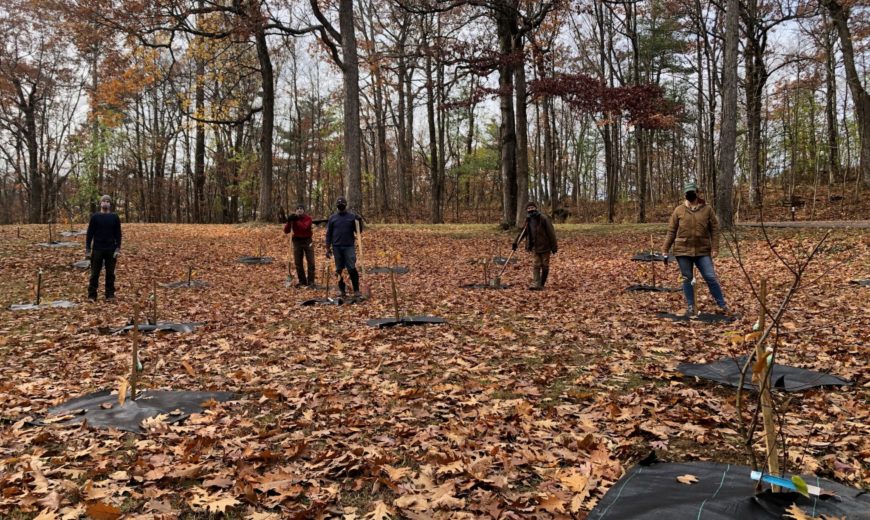American Chestnut Tree Planting in Ethan Allen Park

More exciting tree plantings! BPRW has partnered with UVM and the American Chestnut Foundation to plant 36 American chestnuts in Ethan Allen Park. We have reclaimed an underused site in the park that has been historically mowed. We are excited to bring trees back to this site, increase native plants and beneficial insect activity, and to regenerate a former key species to the park. Don’t worry, we left a lane for the little ones who use the space for sledding in the winter. Please read on to learn more about the American chestnut from UVM Professor, Gary Hawley.
American chestnut (Castanea dentata) was once an important component of eastern United States (US) forests, with its range covering more than 300,000 square miles from Maine to Georgia and west to the Ohio River valley. American chestnut was especially prominent within the heart of this range where it was thought to represent 40% to even 50% of the forest canopy. American chestnut is fast-growing and could achieve massive proportions Its wood is rot-resistant and straight-grained, qualities that historically rendered it suitable for a variety of uses including construction, woodworking, furniture, railroad ties, telephone poles, mine timbers and musical instruments. American chestnut can also produce abundant annual crops of nuts that were a nutritious food source for wildlife, domestic animals and humans.
In the early part of the twentieth century, chestnut blight was introduced to the eastern US. The disease causes cankers that girdle and kill stems but leave root systems unharmed. As a consequence, an estimated 3 to 4 billion American chestnut trees were killed by blight in the first half of the last century, a process that functionally removed the species as an overstory tree within about 40 years of blight introduction. Because of American chestnut’s once prominent ecological and economic value, many approaches to restore the species have been attempted. These include breeding efforts to provide blight tolerance through crossing American chestnut with Asian (typically Chinese) chestnuts that coevolved with the pathogen and show natural resistance to it the blight.
In an effort to help reestablish American chestnut in its natural habitat at the northern part of the species range, Burlington Parks has joined forces with the University of Vermont, USDA Forest Service, and The American Chestnut Foundation to plant blight tolerant American chestnut in parks and conservation areas that provide a suitable habitat. The area recently planted in Ethan Allen Park is especially valuable as it is in an ecosystem that also supports several mature American chestnut trees that have survived and are thriving. We planted American chestnut hybrids (crossed with Chinese chestnut) representing 12 different genetic sources in order to reestablish resistant American chestnut and evaluate which genetic sources grow best in the area. We will be measuring growth characteristics of these trees as part of a research study at the University of Vermont.
